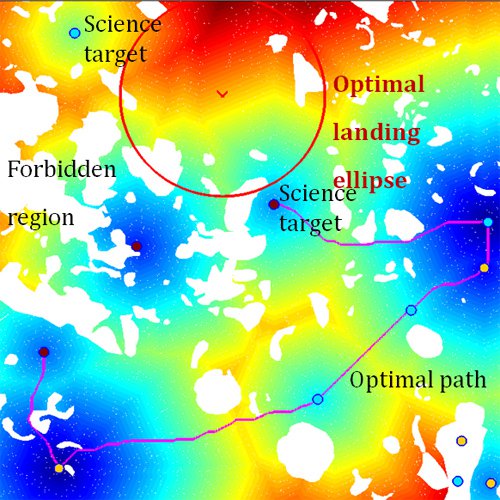
Example path derived from CEMAT cost analysis of landing site and desired science target locations for a given terrain.
System analysis of Mars EDL, Rover Mobility, and Science Site selection tends to be treated in isolation. The problem is further compounded if analysis across multiple landing opportunities needs to be considered. The Combined EDL and Mobility Analysis Trade/Study (CEMAT) tool addresses this problem and provides the capability for systematic design tradeoff between multiple domains, analysis across successive landing opportunity for sample return missions, and determining the relationship between selected Figure-of-Merits and key mission & system parameters. CEMAT provides an automated process for fast, systematic, and rigorous trade-off analysis of problems with both risk constraints and optimization, allowing quantitative comparisons between different sites and different mission and system architectures. The tool can be used from pre-Phase A analysis all the way to Phase E operations.
CEMAT incorporates end-to-end physics-based probabilistic models of performance allowing for combined performance/risk analysis. Coupled-domain trades/optimization capability leads to less over-design of the system for each phase/domain. A principled mathematical approach results in a lower likelihood of missing nonlinear performance and trade effects and the high-fidelity models/simulations allowing for defensible, quantitative results. CEMAT is implemented with optimized high-performance algorithms/software allowing rapid feedback to analysts and stakeholders.


